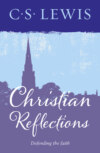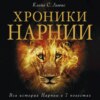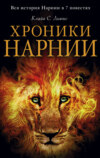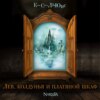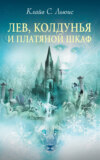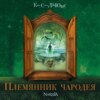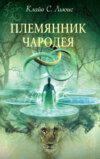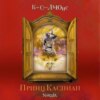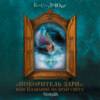Читать книгу: «Christian Reflections»

COPYRIGHT
William Collins
An imprint of HarperCollinsPublishers
1 London Bridge Street
London SE1 9GF
1
Copyright © 1967 by C. S. Lewis Pte Ltd.
Copyright renewed 1973 C. S. Lewis Pte Ltd
This ebook first published by William Collins in 2017
A catalogue record for this book is available from the British Library
All rights reserved under International and Pan-American Copyright Conventions. By payment of the required fees, you have been granted the non-exclusive, non-transferable right to access and read the text of this e-book on screen. No part of this text may be reproduced, transmitted, downloaded, decompiled, reverse engineered, or stored in or introduced into any information storage and retrieval system, in any form or by any means, whether electronic or mechanical, now known or hereafter invented, without the express written permission of HarperCollins.
Source ISBN 9780008203856
Ebook Edition © December 2016 ISBN: 9780008228552
Version: 2016-12-15
CONTENTS
Cover
Title Page
Copyright
Preface by Walter Hooper
Christianity and Literature
Christianity and Culture
Religion: Reality or Substitute?
On Ethics
De Futilitate
The Poison of Subjectivism
The Funeral of a Great Myth
On Church Music
Historicism
The Psalms
The Language of Religion
Petitionary Prayer: A Problem Without an Answer
Fern-seed and Elephants
The Seeing Eye
About the Author
Other Books By
About the Publisher
PREFACE
We were talking one day in 1963, C. S. Lewis and I, about the ‘resurrection’ of literary works. He mentioned Sir Walter Scott as one of his favourite authors whose books had gone out of fashion, but which appeared to be undergoing just such a resurrection. When I predicted that his own books would suffer no decline, he cautioned me against putting too high a value on them. Indeed, he tried to modulate my enthusiasm by pointing out that after an author’s death the general ‘rule’ is that the sales of his books fall drastically and eventually dry up altogether. ‘But sometimes – not by any means always –’, he said, ‘an author’s works undergo a kind of “resurrection”. But that is something no author, alive or dead, can count on.’
A literary historian, Lewis was naturally familiar with this phenomenon. He cherished no undue optimism as to what would happen to his books, and thus his frequent but gentle admonitions when I praised them more than he felt they deserved, and certainly more than made him comfortable. The truth is that Lewis was almost without opinions regarding the value of his writings. In so far as he was ‘worried’ about their future, it was simply that if the sales of his books stopped, and he died first, his elder brother Warren might find it difficult to survive.
A man of such remarkable astuteness, it must seem to many a wonder that C. S. Lewis could have been so unprophetic about the enduring success of his own books – such a glaring exception to the ‘rule’ he spoke of. But those familiar with his life will recall that Lewis was always more interested in writing and arguing for truth, whatever his subject, than in what he might become as a result of it. In this sense, he perfectly fulfilled what, in his essay on ‘Christianity and Literature’, he believed to be the proper attitude of a Christian author towards his own works: ‘Of every idea and of every method he will ask not “Is it mine?” but “Is it good?”’
While he seemed oblivious to the good he had himself given the world, he was by no means oblivious of the harm which has resulted from the widespread apostasy of the clergy, the cant and slush talked by the liberalizing ‘intelligentsia’ and the general lunacy of the world. Lewis certainly knew his place in all this, seeing himself as a Christian layman committed to explaining and defending what he called that ‘enormous common ground’ of belief which, by God’s mercy, exists at the centre of most Christian communions.
Talking about the spiritual bankruptcy we saw around us, Lewis said to me, ‘Our civilization was built upon Christian morals and nourished by the Faith of the Apostles. It was rather like a huge bank account to which many contributed and which everyone has drawn upon. Now, we know that you cannot go on writing cheques on an account unless you continue to add to its capital. The trouble is that, without adding to that capital, we continue to write cheques. One day that capital will run out.’ An apt analogy, it was nevertheless an unusual one coming from a man who was so extraordinarily free with his time and who regularly gave away more than two-thirds of his income to charity.
But be that as it may. Looking back, I realize that while I have always taken seriously Lewis’s fear of our spiritual ‘capital’ running out, nothing he said about the possibility of the demise of his books ever made much of an impression on me. Working in team with my fellow-trustee of the Estate, Owen Barfield, we have sought to make everything Lewis published or left unpublished available to as wide a public as possible. A public, incidentally, which has made itself known to us by the many thousands of letters of gratitude and encouragement we have received over the last sixteen years since Lewis died. What would have happened if Mr Barfield and I had not persevered we shall never know with any exactness.
What we are in no doubt about is that Lewis’s achievements, judging from the rapidly increasing sales of his books, have been spectacular. So spectacular that it has amounted to, if not a ‘resurrection’, at least a renaissance of Christian thought.
This volume of Christian ‘Reflections’ was first published in 1967 during a temporary lull in the sales of Lewis’s theological works when the modernist theologians were trotting out innumerable books on ‘situation ethics’ and the ‘new morality’, books which anyone familiar with the New Testament as well as the past will instantly recognize as the old immorality in a new dress. The ruinous effects of their works we already know, but the ‘innovators’ – as Lewis called them – have now gone even further in seeking to provide for individual and universal ‘happiness’ by the dethronement of traditional values, jettisoning truth and reality from their vocabulary and philosophy.
Lewis had long ago seen it coming. And now, over against the innovators stands the monumental achievement of C. S. Lewis which has been able not only to withstand everything thrown against it, but to instruct and steady those who seek the truth. The purveyors of the new ‘happiness’ and ‘liberation’, unable to ignore Lewis’s supreme intelligence and a precision of language which enabled him to say exactly what he meant, claim that he belonged to the traditions of an earlier century. This, to Lewis, was a very old dodge and his name for it was ‘chronological snobbery’ which is the uncritical acceptance of almost anything merely because it is ‘modern’. The truth is that it is our century which has gone badly wrong, and is itself very much an ‘exception’. Indeed, if one read nothing other than Lewis’s essay on ‘The Poison of Subjectivism’ he would see how well Lewis understood that little portion of human history called ‘the present age’ and how much he did to correct its faults.
But Lewis’s defence of that ‘enormous common ground’ – what he called ‘mere Christianity’ – was colourfully varied, depending on the audience he was addressing. This collection is, therefore, of necessity somewhat heterogeneous. However, as most readers have come to appreciate, it was to a large extent this talent of approaching the truth from such a variety of angles which has made him such an interesting and valuable writer.
It is surely ironical that Lewis, who never sought or wanted to be ‘original’, has been found to be one of the most truly original writers most of us will ever see. The colossal intellect was there all the time, but by forgetting himself he was free to lay the vast treasures of his mind at the Master’s feet. And it is clear from the essays in this book that Lewis understood what diet Our Lord intended when He commanded the Apostle ‘Feed my sheep’.
I am grateful to all those who have permitted me to reprint some of the papers in this book. (1) ‘Christianity and Literature’ was read to a religious society in Oxford and is reprinted from Rehabilitations and Other Essays (Oxford, 1939). (2) The three papers which I have collected under the title ‘Christianity and Culture’ include only Lewis’s part in a controversy which first appeared in the columns of Theology. The entire controversy is composed of the following papers:
1 C. S. Lewis, ‘Christianity and Culture’, Theology, Vol. XL (March 1940), pp. 166–79.
2 S. L. Bethell and E. F. Carritt, ‘Christianity and Culture: Replies to Mr Lewis’, ibid, Vol. XL (May 1940), pp. 356–66.
3 C. S. Lewis, ‘Christianity and Culture’ (a letter), ibid, Vol. XL (June 1940), pp. 475–7.
4 George Every, ‘In Defence of Criticism’, ibid, Vol. XLI (September 1940), pp. 159–65.
5 C. S. Lewis, ‘Peace Proposals for Brother Every and Mr Bethell’, ibid, Vol. XLI (December 1940), pp. 339–48.
I beg the reader to note that ‘Christianity and Culture’ came fairly early in Lewis’s theological corpus. It might best be considered an early step in his spiritual pilgrimage – but certainly not his arrival. Here, instead of spirit progressively irradiating and transforming soul, he seems to envisage a relation between them in strict terms of ‘either-or’, with soul as Calvin’s ‘nature’ and spirit as his ‘grace’, and spirit beginning exactly where soul leaves off. Later on he dealt much more profoundly with the relation between soul and spirit in such things as the essay on ‘Transposition’ and The Four Loves. He says, for instance, in ‘Transposition’:
May we not … suppose … that there is no experience of the spirit so transcendent and supernatural, no vision of Deity Himself so close and so far beyond all images and emotions, that to it also there cannot be an appropriate correspondence on the sensory level? Not by a new sense but by the incredible flooding of those very sensations we now have with a meaning, a transvaluation, of which we have here no faintest guess? *
(3) ‘Religion: Reality or Substitute?’ is reprinted from the now extinct World Dominion, Vol. xix (Sept.–Oct. 1943), except for the autobiographical paragraph 4 and part of paragraph 9 which were added a few years later. (4) The essay ‘On Ethics’ was published here for the first time, and my guess is that it anticipates by a few years Lewis’s The Abolition of Man (1943). (5) ‘De Futilitate’ is an address given at Magdalen College, Oxford, during the Second World War, at the invitation of Sir Henry Tizard (then President of Magdalen College). It, too, was published for the first time in this book. (6) ‘The Poison of Subjectivism’ is reprinted from Religion in Life, Vol. xii (Summer 1943). I regard this as one of Lewis’s most valuable pieces of writing. This is because The Abolition of Man is perhaps the most important book Lewis ever wrote and almost certainly the finest defence of the Moral Law there is. But, whereas The Abolition of Man has been found a little too difficult for the majority of Lewis’s readers, they will find the essence of his argument, not watered down, but compressed into the more easily readable but equally hard-hitting ‘Poison of Subjectivism’.
(7) ‘The Funeral of a Great Myth’, published for the first time in this book, may appear an intruder on theological premises. I have included it here because the ‘myth’ discussed in this essay seems quite obviously to be an out-growth and development of one of the myths compared to the Christian Faith in Lewis’s ‘Is Theology Poetry?’ (The Socratic Digest, No. 3 (1945), pp. 25–35). Its close connection with the Digest essay caused me to feel it deserved a place here; it is, also, relevant to the idea of Theism. (8) ‘On Church Music’ is reprinted from English Church Music, Vol. xix (April 1949). Lewis did not himself like hymns and the existence of this paper is entirely owing to the special invitation of his friend Leonard Blake, who was editor of English Church Music at the time. (9) ‘Historicism’ originally appeared in The Month, Vol. iv (October 1950).
(10) The two-part essay on ‘The Psalms’ was published here for the first time. Judging from the handwriting (Lewis wrote all his works with a nib pen) it would appear to have been composed shortly before his book Reflections on the Psalms (1958). By the by, their mutual friend Charles Williams brought Lewis and T. S. Eliot together for the first time in 1945, at what proved to be a disastrous tea party, Mr Eliot’s opening gambit having been ‘Mr Lewis, you are a much older man than you appear in photographs.’ But their distrust of one another disappeared completely and they became fast friends when they met again in 1959 to serve for several years as literary advisers to the committee whose aim was the revision of the Prayer Book Psalter. The new text, entitled The Revised Psalter, was published by SPCK in 1963.
(11) Although two pages of the manuscript of ‘The Language of Religion’ are lost, the omission, fortunately, does not seriously affect the main argument of the paper. I have only recently discovered that Lewis intended reading it at the Twelfth Symposium of the Colston Research Society held at the University of Bristol in March 1960, but illness prevented him from attending the Symposium and the paper was published here for the first time. (12) ‘Petitionary Prayer: A Problem without an Answer’ was read to the Oxford Clerical Society on 8 December 1953 and it, too, was published for the first time in this book. (13) The numerous admirers of ‘Fernseed and Elephants’ may recall that it was originally published in this volume as ‘Modern Theology and Biblical Criticism’, and I have to admit to altering my original title as I didn’t think it did justice to this superb essay, which Lewis read at Westcott House, Cambridge, on 11 May 1959. (14) ‘The Seeing Eye’ was originally published in the American periodical, Show, Vol. iii (February 1963) under the title ‘Onward, Christian Spacemen’. Lewis so heartily disliked the title which the editors of Show gave this piece that I felt justified in re-naming it.
While most of these essays were never prepared for publication, even those which originally appeared in periodicals were sent to the publishers in Lewis’s own hand. The result was that a good many errors slipped in, and remained, as Lewis was generally rather cavalier about proof-reading. It has fallen to me as his editor to correct such errors as I found, and, because it seemed called for, I have ventured to add footnotes where they were needed. In order to distinguish who wrote which notes, it is, I think, sufficient to point out that all the footnotes are mine except those Lewis appended to the essay on ‘Christianity and Culture’ and two others that are designated by the initials ‘C.S.L.’
Walter Hooper
Oxford, 24 June 1979
CHRISTIANITY AND LITERATURE
When I was asked to address this society, I was at first tempted to refuse because the subject proposed to me, that of Christianity and Literature, did not seem to admit of any discussion. I knew, of course, that Christian story and sentiment were among the things on which literature could be written, and conversely, that literature was one of the ways in which Christian sentiment could be expressed and Christian story told; but there seemed nothing more to be said of Christianity in this connection than of any of the hundred and one other things that men made books about. We are familiar, no doubt, with the expression ‘Christian Art’, by which people usually mean Art that represents Biblical or hagiological scenes, and there is, in this sense, a fair amount of ‘Christian Literature’. But I question whether it has any literary qualities peculiar to itself. The rules for writing a good passion play or a good devotional lyric are simply the rules for writing tragedy or lyric in general: success in sacred literature depends on the same qualities of structure, suspense, variety, diction, and the like which secure success in secular literature. And if we enlarge the idea of Christian Literature to include not only literature on sacred themes but all that is written by Christians for Christians to read, then, I think, Christian Literature can exist only in the same sense in which Christian cookery might exist. It would be possible, and it might be edifying, to write a Christian cookery book. Such a book would exclude dishes whose preparation involves unnecessary human labour or animal suffering, and dishes excessively luxurious. That is to say, its choice of dishes would be Christian. But there could be nothing specifically Christian about the actual cooking of the dishes included. Boiling an egg is the same process whether you are a Christian or a Pagan. In the same way, literature written by Christians for Christians would have to avoid mendacity, cruelty, blasphemy, pornography, and the like, and it would aim at edification in so far as edification was proper to the kind of work in hand. But whatever it chose to do would have to be done by the means common to all literature; it could succeed or fail only by the same excellences and the same faults as all literature; and its literary success or failure would never be the same thing as its obedience or disobedience to Christian principles.
I have been speaking so far of Christian Literature proprement dite – that is, of writing which is intended to affect us as literature, by its appeal to imagination. But in the visible arts I think we can make a distinction between sacred art, however sacred in theme, and pure iconography – between that which is intended, in the first instance, to affect the imagination and the aesthetic appetite, and that which is meant merely as the starting-point for devotion and meditation. If I were treating the visible arts I should have to work out here a full distinction of the work of art from the icon on the one hand and the toy on the other. The icon and the toy have this in common, that their value depends very little on their perfection as artefacts – a shapeless rag may give as much pleasure as the costliest doll, and two sticks tied crosswise may kindle as much devotion as the work of Leonardo.* And to make matters more complicated the very same object could often be used in all three ways. But I do not think the icon and the work of art can be so sharply distinguished in literature. I question whether the badness of a really bad hymn can ordinarily be so irrelevant to devotion as the badness of a bad devotional picture. Because the hymn uses words, its badness will, to some degree, consist in confused or erroneous thought and unworthy sentiment. But I mention this difficult question here only to say that I do not propose to treat it. If any literary works exist which have a purely iconographic value and no literary value, they are not what I am talking about. Indeed I could not, for I have not met them.
Of Christian Literature, then, in the sense of ‘work aiming at literary value and written by Christians for Christians’, you see that I have really nothing to say and believe that nothing can be said. But I think I have something to say about what may be called the Christian approach to literature: about the principles, if you will, of Christian literary theory and criticism. For while I was thinking over the subject you gave me I made what seemed to me a discovery. It is not an easy one to put into words. The nearest I can come to it is to say that I found a disquieting contrast between the whole circle of ideas used in modern criticism and certain ideas recurrent in the New Testament. Let me say at once that it is hardly a question of logical contradiction between clearly defined concepts. It is too vague for that. It is more a repugnance of atmospheres, a discordance of notes, an incompatibility of temperaments.
What are the key-words of modern criticism? Creative, with its opposite derivative; spontaneity, with its opposite convention; freedom, contrasted with rules. Great authors are innovators, pioneers, explorers; bad authors bunch in schools and follow models. Or again, great authors are always ‘breaking fetters’ and ‘bursting bonds’. They have personality, they ‘are themselves’. I do not know whether we often think out the implication of such language into a consistent philosophy; but we certainly have a general picture of bad work flowing from conformity and discipleship, and of good work bursting out from certain centres of explosive force – apparently self-originating force – which we call men of genius.
Now the New Testament has nothing at all to tell us of literature. I know that there are some who like to think of Our Lord Himself as a poet and cite the parables to support their view. I admit freely that to believe in the Incarnation at all is to believe that every mode of human excellence is implicit in His historical human character: poethood, of course, included. But if all had been developed, the limitations of a single human life would have been transcended and He would not have been a man; therefore all excellencies save the spiritual remained in varying degrees implicit. If it is claimed that the poetic excellence is more developed than others – say, the intellectual – I think I deny the claim. Some of the parables do work like poetic similes; but then others work like philosophic illustrations. Thus the Unjust Judge is not emotionally or imaginatively like God: he corresponds to God as the terms in a proportion correspond, because he is to the Widow (in one highly specialized respect) as God is to man. In that parable Our Lord, if we may so express it, is much more like Socrates than Shakespeare. And I dread an over-emphasis on the poetical element in His words because I think it tends to obscure that quality in His human character which is, in fact, so visible in His irony, His argumenta ad homines, and His use of the a fortiori, and which I would call the homely, peasant shrewdness. Donne points out that we are never told He laughed; it is difficult in reading the Gospels not to believe, and to tremble in believing, that He smiled.
I repeat, the New Testament has nothing to say of literature; but what it says on other subjects is quite sufficient to strike that note which I find out of tune with the language of modern criticism. I must begin with something that is unpopular. St Paul tells us (1 Corinthians 11:3) that man is the ‘head’ of woman. We may soften this if we like by saying that he means only man quâ man and woman quâ woman and that an equality of the sexes as citizens or intellectual beings is not therefore absolutely repugnant to his thought: indeed, that he himself tells us that in another respect, that is ‘in the Lord’, the sexes cannot be thus separated (ibid, 11:11). But what concerns me here is to find out what he means by Head. Now in verse 3 he has given us a very remarkable proportion sum: that God is to Christ as Christ is to man and man is to woman, and the relation between each term and the next is that of Head. And in verse 7 we are told that man is God’s image and glory, and woman is man’s glory. He does not repeat ‘image’, but I question whether the omission is intentional, and I suggest that we shall have a fairly Pauline picture of this whole series of Head relations running from God to woman if we picture each term as the ‘image and glory’ of the preceding term. And I suppose that of which one is the image and glory is that which one glorifies by copying or imitating. Let me once again insist that I am not trying to twist St Paul’s metaphors into a logical system. I know well that whatever picture he is building up, he himself will be the first to throw it aside when it has served its turn and to adopt some quite different picture when some new aspect of the truth is present to his mind. But I want to see clearly the sort of picture implied in this passage – to get it clear however temporary its use or partial its application. And it seems to me a quite clear picture; we are to think of some original divine virtue passing downwards from rung to rung of a hierarchical ladder, and the mode in which each lower rung receives it is, quite frankly, imitation.
What is perhaps most startling in this picture is the apparent equivalence of the woman-man and man-God relation with the relation between Christ and God, or, in Trinitarian language, with the relation between the First and Second Persons of the Trinity. As a layman and a comparatively recently reclaimed apostate I have of course, no intention of building a theological system – still less of setting up a catena of New Testament metaphors as a criticism of the Nicene or the Athanasian creed, documents which I wholly accept. But it is legitimate to notice what kinds of metaphor the New Testament uses; more especially when what we are in search of is not dogma but a kind of flavour or atmosphere. And there is no doubt that this kind of proportion sum – A:B : : B:C – is quite freely used in the New Testament where A and B represent the First and Second Persons of the Trinity. Thus St Paul has already told us earlier in the same epistle that we are ‘of Christ’ and Christ is ‘of God’ (3:23). Thus again in the Fourth Gospel, Our Lord Himself compares the relation of the Father to the Son with that of the Son to His flock, in respect of knowledge (10:15) and of love (15:9).
I suggest, therefore, that this picture of a hierarchical order in which we are encouraged – though, of course, only from certain points of view and in certain respects – to regard the Second Person Himself as a step, or stage, or degree, is wholly in accord with the spirit of the New Testament. And if we ask how the stages are connected the answer always seems to be something like imitation, reflection, assimilation. Thus in Galatians 4:19, Christ is to be ‘formed’ inside each believer – the verb here used  meaning to shape, to figure, or even to draw a sketch. In First Thessalonians (1:6) Christians are told to imitate St Paul and the Lord, and elsewhere (1 Corinthians 11:1) to imitate St Paul as he in turn imitates Christ – thus giving us another stage of progressive imitation. Changing the metaphor we find that believers are to acquire the fragrance of Christ, redolere Christum (2 Corinthians 2:16): that the glory of God has appeared in the face of Christ as, at the creation, light appeared in the universe (2 Corinthians 4:6); and, finally, if my reading of a much disputed passage is correct, that a Christian is to Christ as a mirror to an object (2 Corinthians 3:18).
meaning to shape, to figure, or even to draw a sketch. In First Thessalonians (1:6) Christians are told to imitate St Paul and the Lord, and elsewhere (1 Corinthians 11:1) to imitate St Paul as he in turn imitates Christ – thus giving us another stage of progressive imitation. Changing the metaphor we find that believers are to acquire the fragrance of Christ, redolere Christum (2 Corinthians 2:16): that the glory of God has appeared in the face of Christ as, at the creation, light appeared in the universe (2 Corinthians 4:6); and, finally, if my reading of a much disputed passage is correct, that a Christian is to Christ as a mirror to an object (2 Corinthians 3:18).
These passages, you will notice, are all Pauline; but there is a place in the Fourth Gospel which goes much further – so far that if it were not a Dominical utterance we would not venture to think along such lines. There (5:19) we are told that the Son does only what He sees the Father doing. He watches the Father’s operations and does the same  or ‘copies’. The Father, because of His love for the Son, shows Him all that He does. I have already explained that I am not a theologian. What aspect of the Trinitarian reality Our Lord, as God, saw while He spoke these words, I do not venture to define; but I think we have a right and even a duty to notice carefully the earthly image by which He expressed it – to see clearly the picture He puts before us. It is a picture of a boy learning to do things by watching a man at work. I think we may even guess what memory, humanly speaking, was in His mind. It is hard not to imagine that He remembered His boyhood, that He saw Himself as a boy in a carpenter’s shop, a boy learning how to do things by watching while St Joseph did them. So taken, the passage does not seem to me to conflict with anything I have learned from the creeds, but greatly to enrich my conception of the Divine sonship.
or ‘copies’. The Father, because of His love for the Son, shows Him all that He does. I have already explained that I am not a theologian. What aspect of the Trinitarian reality Our Lord, as God, saw while He spoke these words, I do not venture to define; but I think we have a right and even a duty to notice carefully the earthly image by which He expressed it – to see clearly the picture He puts before us. It is a picture of a boy learning to do things by watching a man at work. I think we may even guess what memory, humanly speaking, was in His mind. It is hard not to imagine that He remembered His boyhood, that He saw Himself as a boy in a carpenter’s shop, a boy learning how to do things by watching while St Joseph did them. So taken, the passage does not seem to me to conflict with anything I have learned from the creeds, but greatly to enrich my conception of the Divine sonship.
Now it may be that there is no absolute logical contradiction between the passages I have quoted and the assumptions of modern criticism: but I think there is so great a difference of temper that a man whose mind was at one with the mind of the New Testament would not, and indeed could not, fall into the language which most critics now adopt. In the New Testament the art of life itself is an art of imitation: can we, believing this, believe that literature, which must derive from real life, is to aim at being ‘creative’, ‘original’, and ‘spontaneous’? ‘Originality’ in the New Testament is quite plainly the prerogative of God alone; even within the triune being of God it seems to be confined to the Father. The duty and happiness of every other being is placed in being derivative, in reflecting like a mirror. Nothing could be more foreign to the tone of scripture than the language of those who describe a saint as a ‘moral genius’ or a ‘spiritual genius’ thus insinuating that his virtue or spirituality is ‘creative’ or ‘original’. If I have read the New Testament aright, it leaves no room for ‘creativeness’ even in a modified or metaphorical sense. Our whole destiny seems to lie in the opposite direction, in being as little as possible ourselves, in acquiring a fragrance that is not our own but borrowed, in becoming clean mirrors filled with the image of a face that is not ours. I am not here supporting the doctrine of total depravity, and I do not say that the New Testament supports it; I am saying only that the highest good of a creature must be creaturely – that is, derivative or reflective – good. In other words, as St Augustine makes plain (De Civ. Dei 12, cap. 1), pride does not only go before a fall but is a fall – a fall of the creature’s attention from what is better, God, to what is worse, itself.
Бесплатный фрагмент закончился.
Начислим
+32
Покупайте книги и получайте бонусы в Литрес, Читай-городе и Буквоеде.
Участвовать в бонусной программе
